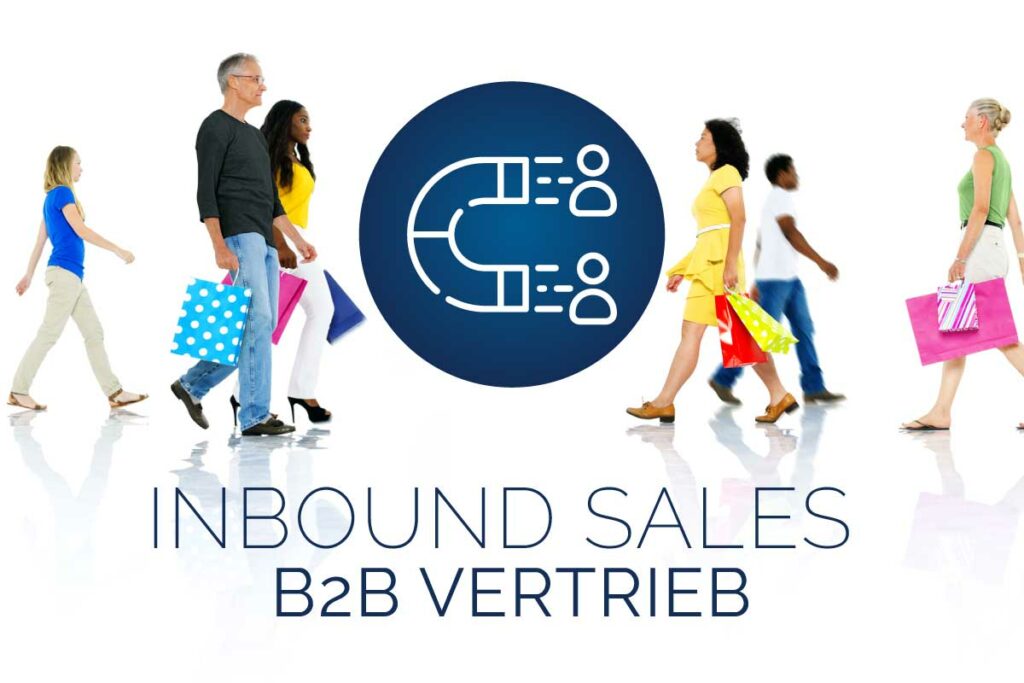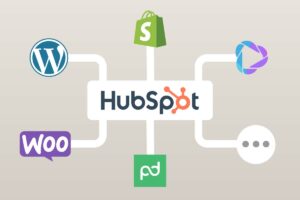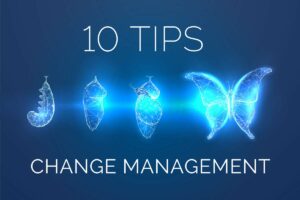Already familiar with inbound sales strategy and want to know more? Here are helpful tips for customer acquisition using the inbound sales strategy on HubSpot.
To do this, we bring together the 3 stages a buyer goes through in the Buyer’s Journey and the 4 stages in inbound sales we introduced in our last blog. You will learn what to do at which stage of the buyer’s journey in B2B sales to generate more qualified leads and strengthen new customer acquisition.
Phase 1:
Identify in the awareness phase
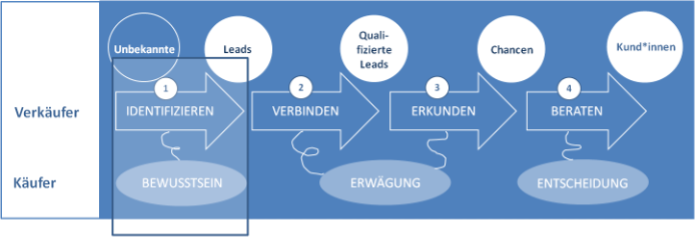
- Gather information about potential customers: Use helpful tools such as Google Alerts, network on LinkedIn with companies and contacts that are interesting for your potential customers, or comment on selected blogs and posts from trigger events (e.g. job postings or press releases). Who is on your website? Such inbound leads are among the most valuable!
- Prioritize active buyers: To avoid deadbeats, focus on active buyers who match your buyer personas. Offer contact options (e.g., contact form on website, link to email, landing pages). Call back promptly (e.g., within the first five minutes).
Phase 2:
Connect in the recital phase
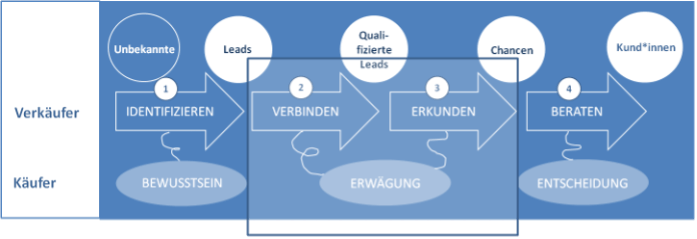
- Define buyer personas: The more you know about your ideal customers, the better you can develop an effective lead generation strategy.
- Determine procedures: Would your buyer personas prefer to be contacted by phone or email? Which communication strategy fits which persona? How often should it be contacted?
- Generate appropriate content for each stage: Buyers who are at the very beginning of the connection phase have different needs than qualified leads. Here they should not fall with the door in the house and immediately make an offer for sale. Better to first offer information around the problem and show your consulting skills. This is how you create credibility and trust.
- Generate attention: give a (really good!) advice or get into contact with a surprising fact that has to do with the potential buyer’s need and makes him curious.
- Leverage the reach and capabilities of new technologies: HubSpot, for example, offers you a fully featured, automated workbench for your customer relationship management.
Phase 3:
Explore in the recital phase

- Use neutral or positive wording: People usually do not like change. Especially not if they are uncomfortable. It may therefore help to speak of “challenges” rather than “problems.”
- Connect goals and challenges: Ask your counterpart about his or her goals and any obstacles on the way to achieving them. This often results in the desire for a solution or the need for support.
- Consider the perspectives of new customers: Bring your product into play and show that you have a solution to the problem. Highlight the added value that clearly differentiates your solution from the competition.
- Address budget and timeline: you need to know what your potential new customer’s budget is and what their timeline is.
Phase 4:
Consulting in the decision phase
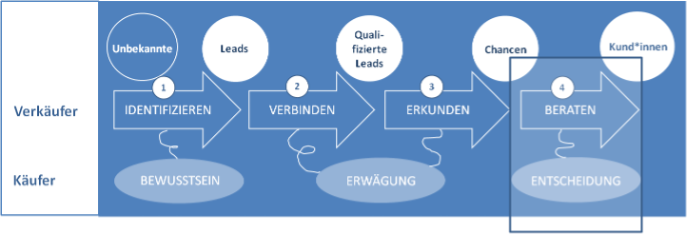
- Summarize what you have heard: From your point of view, reflect where the customer currently stands and what you have learned from them so far. What are the customer’s goals, needs and challenges again?
- Make suggestions on how to achieve goals: Using a personalized presentation tailored precisely to the customer, you show how their goals and challenges can be combined into a solution via your product. Where is the concrete benefit for the customer? Is it measurable via a key figure (e.g. return on investment)? Formulations such as “Have you ever thought of doing … to do?” or “Would it help you if I … show you?” have a supportive effect.
- Create budget and time schedule: Starting from the desired time of target achievement in the future, you go back to the present step by step together with the customer and create a realistic time and budget plan.
If you would like support in implementing your inbound sales strategy with HubSpot, we would be happy to advise you and help you reach your potential customers in the best possible way.
Until the next update – your Growth Ninjas,
Adrienne, David, Hermann, Johannes, Katharina B., Stefan K. & Stefan G.

